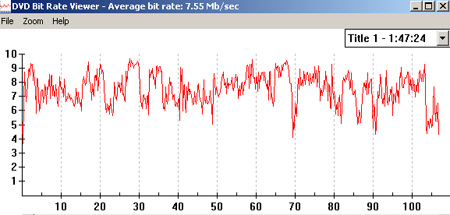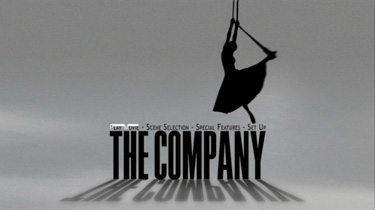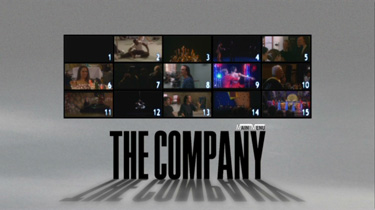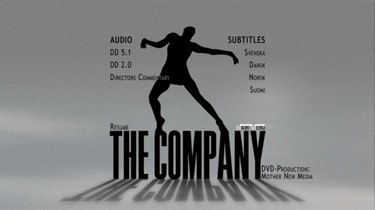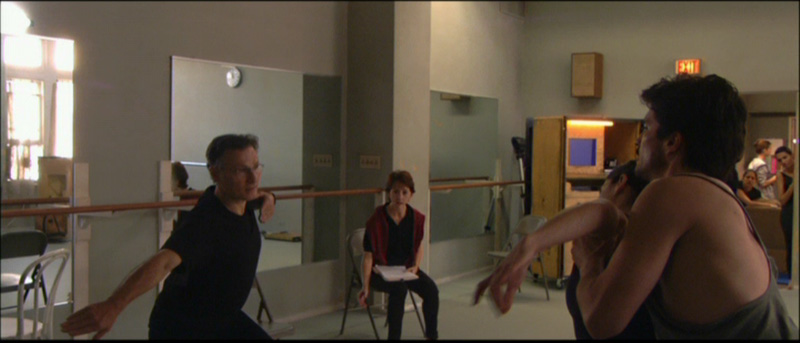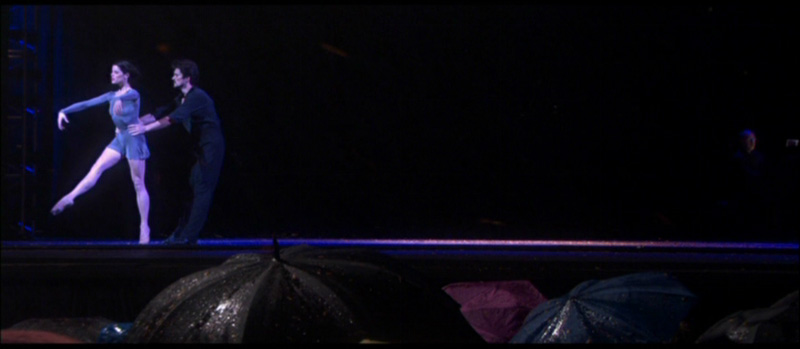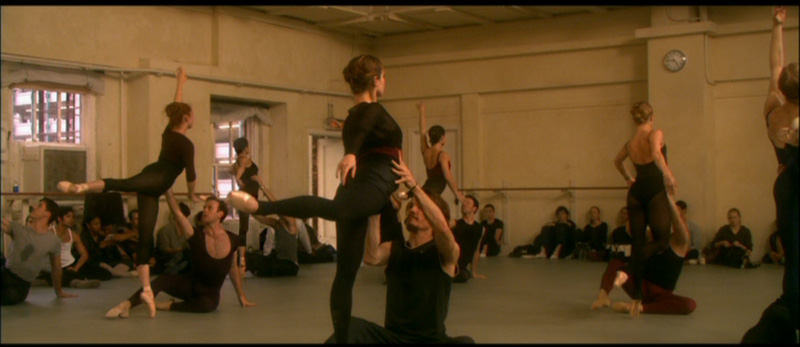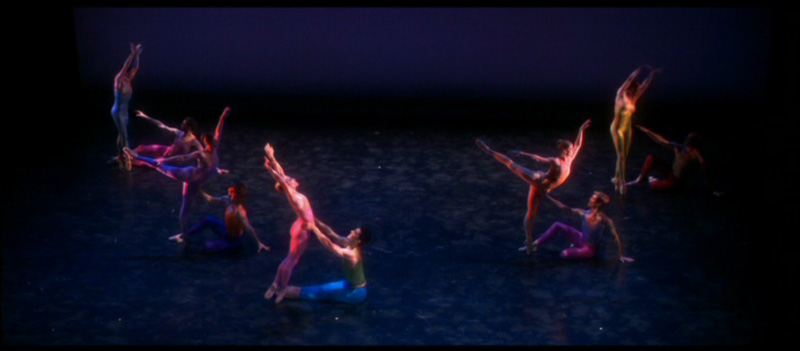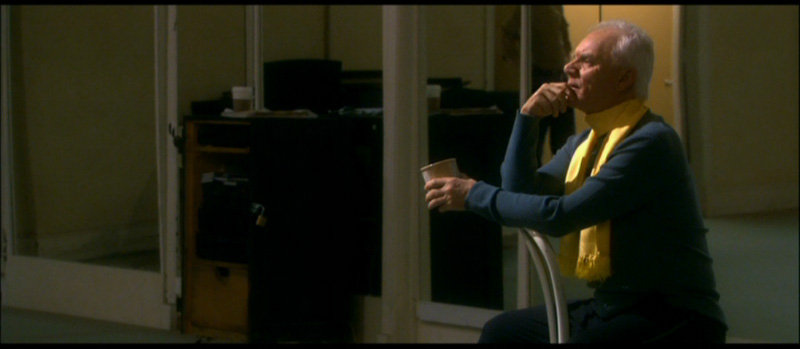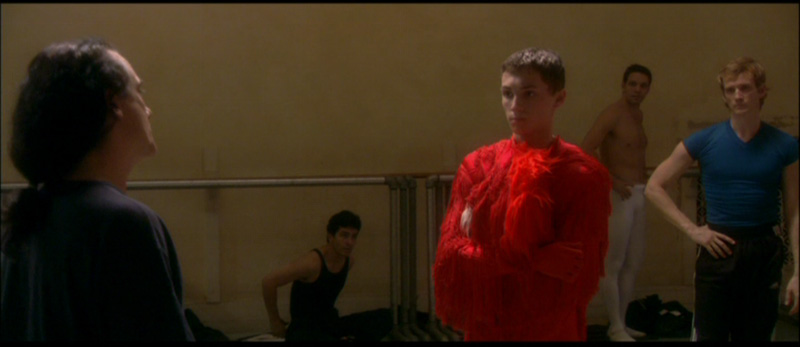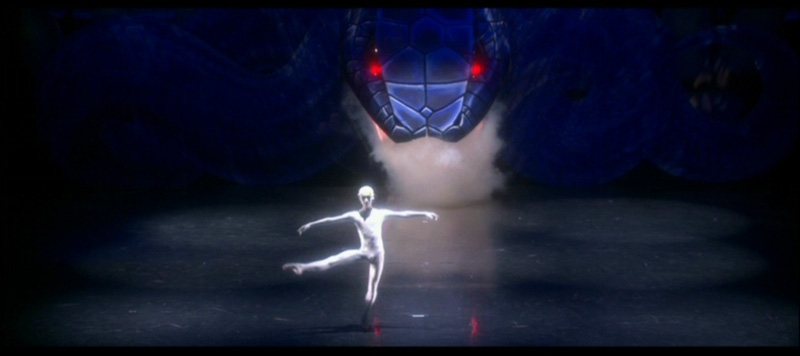![]()

![]()
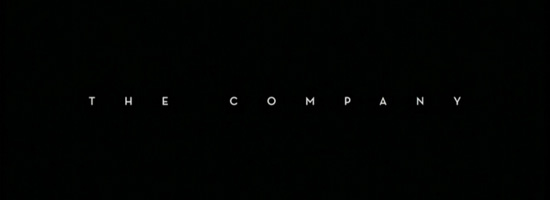
(aka "Das Ensemble" )
directed
by Robert Altman
USA 2003
The Joffrey company was established in 1956, when two of
Americas most visionary dancers, Robert Joffrey and Gerald Arpino, created an
ensemble of six individual dancers and began to tour the US with a repertoire
of their own. If later found a home in Chicago and has ever since been one of
the mayor companies in the world.
Ballet is a cruel mistress and has by many been described as living in a
monastery. Those who practice it, basically give up their entire life, train
for hours and years and live in constant pain. What we see on stage is the
result of years, of a lifetime of attempting to master movements. No other art
form depends of and is driven by such a degree on perfection.
“You either have the body for it or you don’t”, says Neve Campbell. Quiet a
talented dancer herself and obsessed with Ballet, she didn’t and became an
actress instead. But her love for the Ballet never ceased, so she found a way
to express it in “The Company”.
At least so she thought, as “The Company” is one truly uninspiring film. There
is no plot, the story is minimal at best, it never lets you inside the world
of the dancers and according to professional ballet dancers, the entire
storyline is somewhat unrealistic and has no respect for either the dancers or
choreography. One such dancer, Elizabeth Zimmer in the “Village Voice”, even
calls the film a mix of mockumentary and weepy chick-flick.
I truly believe that Campbell’s love for the dance is real, but it is with
some naivety she approaches the story, which was written based on a few weeks
experience within the company. All respect for writers and actors, but how
many would dare to say, that they really felt God and knew why women would
become nuns, by living a few weeks within a monastery? It’s not that something
got lost in translation, its more than something didn’t translate.
Thus “The Company” becomes on one side an attempt to describe what is so
fascination about Ballet (from Campbell’s side) and on the other some
preopinions and added dramatic emotionally clichés (by writer Barbara Turner).
There simply is a world apart between the real company and “The Company”.
Perhaps it was why the real dancers were somewhat displeased with the choice
of the choreographies. Perhaps it was why Altman’s told Turner, “Barbara, I
read your script and I don't get it. I don't understand. I don't know what it
is. I'm just the wrong guy for this.”
For instance the leader of the company Alberto Antonelli (Malcolm McDowell),
is shaped on how they perceive co-founder and artistic director Gerald Arpino,
who only on one occasion is allowed to demonstrate his eye for ballet, and
generally enters, says a few words and then leaves, almost seeming detached
from the company he is running. Also top dancers don’t need to work as
cocktail waitress to pay for their tuition, nor smoke and drink beer like “any
other girl” when they are out.
In my opinion, the failed translation comes from Turner doesn't seeing the
dancers as real people with lifes, thus "makes up real life" for them, like
the working situation and love interest for Campbell and the housing problems
for another dancer. Where Campbells insight comes from years of dancing
herself and her love from her obsession, Turner assumed it by living a few
weeks amongst dancers. Her script becomes arrogant, as she makes up situations
and pities them by saying, "Look at how hard a life they have, look at what
they must go thru."
The main problem thus becomes, that the story doesn’t know which leg to stand
on and becomes a feature film attempting to be a documentary. Telling the
story of a company, the characters remain anonym (except a few – Neve),
telling a collective tale, showing the company as a living organism, making
transitions between practice and performance, never allowing itself to pace
down and dwell on a character or a scene; perhaps because most people would
find it boring to sit and watch dancers practice. Thus it becomes uninvolved,
which again makes its viewers uninvolved, not knowing what to make of a film
without a narrative identity.
Yet it is fascinating to watch. While it is the most uninspired film Altman
yet has made, thin as paper in its construction, light as air in its
directorial touch, the dance sequences, especially those choreographed by Lar
Lubovitch, are fascinating to watch, even though they never become more than
footnotes. Roger Ebert suggests that “The Company” is Altman’s most
autobiographical film. An interesting thought, which does allow several
auteurist interpretations, especially when considering what Ebert calls “the
process”.
As an Altman film, “The Company” is a celebration of his technique -
overlapping dialogue, the quiet desperate camera pans, how someone entering in
the background counterweights the action, incomplete scenes, to name a few –
and just as Altman creates a film, a scene, the company creates a ballet, from
idea over training to performance. While the writers fail in making the world
of ballet available to us, Altman excels in showing us the process of creating
art, and does so with some stunning imagery shot on a Sony HDW-F900 (High
Definition) by Andrew Dunn, forever changing their approach to cinematography.
A note about the acting, which as with Altman always is wonderful. Even though
she tries to stay in the back, the lead is Campbell and she really does a
great job, both as actor and dancer. Likewise the dancers, all amateur actors,
but professional performers, are so within the scene.
That Altman is a master is indisputable, but regardless of his skill and
signature, “The Company” remains a film without a narrative identity, which
would have been good, had it been a documentary. A shame for Altman as
director and a shame for Campbell as ballet lover.
Posters
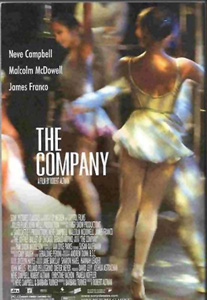 |
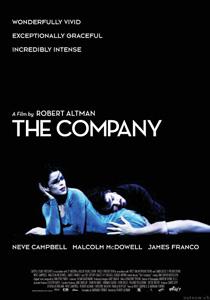 |
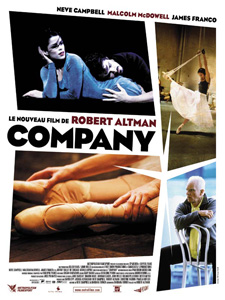 |
Theatrical Release: September 8, 2003 (Toronto Film Festival)
Reviews More Reviews DVD Reviews
DVD Review: Sony Pictures / SF Film - Region 2 - PAL
Big thanks to Henrik Sylow for the Review!
| DVD Box Cover |
|
CLICK to order from: NOTE: Purchases through DVDBeaver's links to Amazon help keep us afloat and advertisement free! |
| Distribution |
Sony Pictures / SF Film Region 2 - PAL |
|
| Runtime | 1:47:26 (4% PAL speedup) | |
| Video |
2.35:1 Original Aspect Ratio
16X9 enhanced |
|
|
NOTE: The Vertical axis represents the bits transferred per second. The Horizontal is the time in minutes. |
||
| Bitrate |
|
|
| Audio | 2.0 Dolby Digital English, 5.1 Dolby Digital English | |
| Subtitles | Danish, Swedish, Norwegian, Finnish, None | |
| Features |
Release Information: Studio: Sony Pictures / SF Film Aspect Ratio:
Edition Details:
Chapters 15 |
|
| Comments |
This is one superb transfer, completely
flawless, with fat, saturated colors. The same goes about the sound,
especially the 5.1 DD track, which has dialogue concentrated front, and
everything else around you, which makes especially the performance
sequences sound impressive. The additional material is however on the rather thin side. First there is an audio commentary where Neve Campbell and Robert Altman are talking about the film. Its very much them watching the film and then commenting. Campbell outmatches Altman here, as she knows ballet and one can really feel it in her voice. There are moments where she talks about the dance, where you can feel her literary restraining herself not to stand up and just dance. Altman’s comments is more about film itself and he educates Campbell, and thereby us, in how he creates a scene, why a scene is shot like that and so on. Not the best commentary, but full of passion and technical skill, so in the end still rewarded. The other material is almost a joke and is your classic praising everybody publicity material. A 7 minute making spending half the time telling us that Altman directed and Campbell starring, must be a record. The trailer does about the same, just without Altman in it. |
|
DVD Menus
|
|
|
|
|
|
Screen Captures
Captures resized to 800px width from native 1016px
|
|
|
|
|
|
|
|
|
|
|
|
|
|

